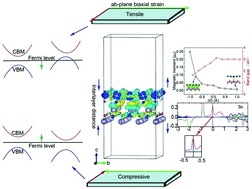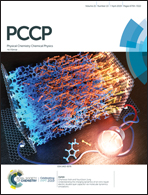Magnetic proximity effect induced spin-dependent electronic structure in two-dimensional SnO by half-metallic monolayer CrN ferromagnet
Abstract
Monolayer SnO has been attracting much attention owing to its unique electronic structure, which has potential applications in nanoelectronic and optoelectronic devices. However, it is necessary to induce the spin-dependent electronic structure of monolayer SnO for its applications in spintronics. Here, in order to induce the spin polarization of monolayer SnO by magnetic proximity effects, the spin-dependent electronic structure of two-dimensional (2D) van der Waals (vdW) SnO/CrN heterostructures is calculated using first-principles calculations by considering different strains and interlayer distances. When the interlayer distance of the heterostructure increases, the Sn magnetic moment decreases, but the Cr magnetic moment increases. As the interlayer distance decreases, the band gap of SnO decreases in the spin-down channel because of the enhancements in orbital overlap and hybridization. Meanwhile, the electronic structure of monolayer SnO/CrN heterostructures can also be tailored by in-plane biaxial strain. With an increase in tensile strain, the Fermi level of monolayer SnO moves down and p-type doping appears. For compressive strains, the Fermi level of monolayer SnO moves upward and n-type doping appears. When the in-plane biaxial strain turns from compressive to tensile, the magnetic anisotropy of CrN in monolayer SnO/CrN heterostructure increases, where the easy axis is perpendicular to the CrN layer.



 Please wait while we load your content...
Please wait while we load your content...